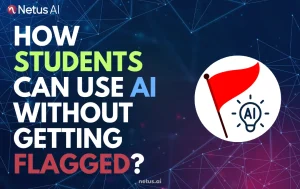
Why Students Are Getting Flagged Even When Writing Honestly | NetusAI
Learn how students can use AI tools for writing and research without getting flagged by AI detectors. Get tips on humanizing content and staying academically safe.
Plagiarism in Music: Notable Cases Throughout History Explored

Content writer and editor for Netus.AI
Plagiarism in Music. Plagiarism in the music industry is not a new phenomenon but remains a critical issue for creators. This issue can take various forms, such as copying melodies from original work, incorporating parts of existing melodies into new compositions, unauthorized use of lyrics, or replicating musical ideas and motifs from established songs. These seemingly harmless actions can have significant consequences, especially when the original creator is not given proper credit or recognition for their work.
As the music industry evolves, the prevalence and complexity of plagiarism cases has increased, with many notable examples making headlines over the years. Understanding plagiarism in music is crucial for both creators and consumers alike, as it helps to protect the rights of all involved and maintain the integrity of creative works.
The widespread availability of music through digital media platforms has made it easier than ever to access, download, and upload songs. This has led to a surge in piracy and music plagiarism cases. The pressure to meet deadlines and produce content quickly can compromise the artistic exploration required to create original tunes. This sometimes results in artists unintentionally plagiarizing others’ works.
Copyright infringement can occur when music compositions are plagiarized, potentially leading to a music plagiarism lawsuit. To protect creators’ rights, copyright laws:
If found guilty in a U.S. District Court, offenders can face significant financial losses.
Technology plays a crucial role in identifying instances of plagiarism in music, mainly through vigilant listeners and specialized tools.
Audience members can often recognize when an artist has copied a particular melody or lyrics, thus prompting reports of copyright infringement. Their familiarity with various musical pieces enables them to act as effective judges in cases of potential plagiarism.
Moreover, the advent of plagiarism checkers and copyright checkers has further facilitated the detection of music plagiarism. These tools, often employed by musicologists, assist in comparing songs and identifying possible unauthorized usage.
However, the use of sampling, which involves incorporating a part of an existing sound recording into a new song, can sometimes result in unintentional plagiarism. This occurs when users unknowingly or without proper permission include someone else’s music in their work. To tackle this issue, it is essential for apps and platforms to include disclaimers and alerts to educate users about potential copyright issues and promote responsible usage of sampling.
Yes, there have been real cases of plagiarism in the music industry, despite its inherent dependence on creativity and originality.
In 1970, ex-Beatle George Harrison released My Sweet Lord, which faced controversy due to its striking resemblance to The Chiffons’ 1962 hit “He’s so Fine.” These similarities have led to numerous legal battles over intentional or accidental plagiarism.
John Lennon’s “Come Together” from the album “Abbey Road” faced a copyright violation accusation because of its similar rhythm pattern to Chuck Berry’s “You Can’t Catch Me.” Though attempts were made to settle the issue out of court, legal action was eventually taken against Morris Levy, the publisher of Chuck Berry.
Guitar legend Joe Satriani accused Coldplay of plagiarizing their song Viva La Vida. Coldplay also faced conflict with a US band Creaky Boards over the same song. Luckily, the case was dismissed and resolved outside the court.
Surprisingly, John Fogerty faced self-plagiarism accusations from his old record label. He defended himself successfully and won the case.
In 1994, Oasis released “Shakermaker,” which had a similar melody to The New Seekers’ Coke commercial song, “I’d Like to Teach the World to Sing.” The issue was resolved with an out-of-court settlement of approximately half a million dollars.
Pharrell Williams and Robin Thicke faced controversy with their song “Blurred Lines” after Marvin Gaye’s family claimed it had similarities to “Got to Give It Up” released in 1977. The legal proceedings that followed were surprising to both stars.
Elastica’s uptown funk band made headlines with their song that seemed to be inspired by the classic song “Three Girl Rhumba” by Wire. The band had a close call regarding plagiarism allegations in this case.
It’s not uncommon for musicians to draw inspiration from other artists. Similar creative ideas could appear naturally. However, there have been many instances of plagiarism with some artists facing multiple accusations. Often, such disputes are settled outside of court.

Learn how students can use AI tools for writing and research without getting flagged by AI detectors. Get tips on humanizing content and staying academically safe.

Explore the best paid AI humanizer tools that deliver high-quality, undetectable content. Compare pricing, features, and accuracy to choose the right solution for your needs.

Looking for the best tools to make AI content undetectable? Explore top AI humanizers, bypass tools, and rewriting solutions to pass detectors and sound fully human.

Explore why AI content humanization is essential for SEO success. Learn how human-like rewrites can improve rankings, engagement, and trust with search engines.

Discover the best free AI humanizer tools to make your content sound natural and bypass AI detection. Compare features, pros, and limitations of top free options.

Learn how to prompt AI tools to write like a human. Discover techniques to improve tone, structure, and emotion in AI-generated content for better authenticity and SEO.
@ 2024 Netus AI.